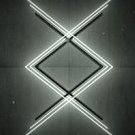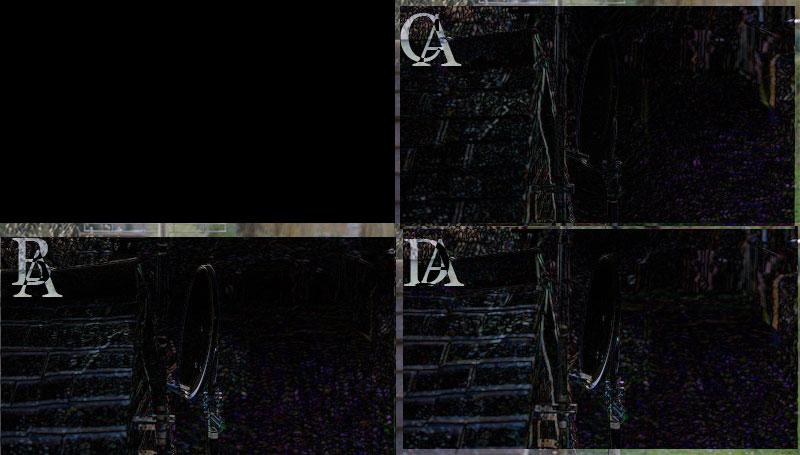Leaderboard
Popular Content
Showing content with the highest reputation on 02/25/2015 in all areas
-
FULL FRAME or SUPER 35 - What do you prefer and why?
jcs and one other reacted to SleepyWill for a topic
OK, here we are then. 4 cameras, 4 different sensor sizes, 8 of the blandest lenses in my collection (read: most uniform). One camera is full frame, one is crop, one is 4/3's and a lot of kudos if someone identifies the other, with sound reasoning. My method was to use the full frame camera first, to take a shot. Then I examined it and set up all the other cameras to attempt to get them to replicate that look precisely. I used every trick in, on and around the camera that I know, with the exception of additional lighting, reflectors etc. Once I was happy with my setup for each, I took all four shots (including the ff again). Camera profiles were the most basic straight forward, consumer friendly ones, the reason being, so that the only post processing done was in photoshop where I combined the 4 shots into a single picture. No work was done on the pictures beyond pasting them into a square and putting a letter on them. The question is, of course, can you tell which sensor size took which image, failing that can you identify only the full frame?2 points -
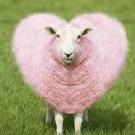
EOSHD opinion: smartphones are not killing DSLRs, apps and online services are
Xavier Plagaro Mussard and one other reacted to Jimmy for a topic
It is smartphones AND apps... The two are symbiotic. The cameras on modern smart phones are great, the apps are great... I can shoot and edit raw images on my Nexus. As Mozim says though, this will help separate the two industries... Which I think is a good thing. Canon, Nikon etc can cater to people who care about lasting imagery, rather than shoot and share. You say "no wifi on high end",,,, it doesn't need it, it doesn't need grading apps, facebook sharing apps.... Just a very low battery consumption bluetooth, like the NX1 has. Send the raw to your phone.... Grade and share (while the raw file is uploaded to dropbox, for backup). Let the phone do what it does best. Simple.2 points -
Larger formats can work some magic that smaller can't. This is because to create the equivalent DOF of 65mm film/sensor on 35mm for example, you'd need an impossibly fast lens or some kind of massive speed booster. Truth is though, it's quite hard keeping even Super 35 in focus at apertures of f2.8 and wider. As a result I find S35 to be the best balance between a great look and handleable focusing. I spend most of my time shooting about f4 or f2.8 on Super 35 unless it's very dark or I want the super shallow aesthetic.2 points
-
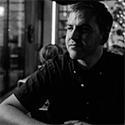
Alexa Mini!
Christina Ava reacted to Zach Ashcraft for a topic
Anyone have $20K I can borrow? http://www.arri.com/alexamini/1 point -

One Week with SLR Magic Anamorphot 2x (GH4 UHD 4:3)
valid reacted to Sebastien Farges for a topic
Hello anamorphic shooters ! Here is my very first shots with the upcoming SLR Magic Anamorphot 2x ! Thanks for watching ! https://vimeo.com/120495775 One week with SLR Magic Anamorphot 2x on Voigtlander Ultron 28mm f1.9 on Canon FD 50mm f1.4 + Metabones Speed Booster on Canon FD 35mm f2 As you can see the Canon FD work better than the Voigtlander All the close up were taken without diopter except when it's written GH4 UHD 4:3 Cinelike V 0 -5 -5 -2 +2 Lumetri CC and levels adjustments Everything was shot @f4 / f5.6 except some close shot @1.9 in the first part SLR Magic achromatic diopters +0.33, +1.3, +1.8 and Narumi achromatic +3 diopter1 point -
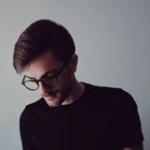
FULL FRAME or SUPER 35 - What do you prefer and why?
jcs reacted to Nick Hughes for a topic
They're not same image- you can test yourself using photoshop and the "difference" blend mode. I overlaid A with every image in the third example. The first box is black because it's an exact match. None of the other images disappear because they are all slightly different. Certain points line up and cancel out (it's very close after all, that's the point of the test), but no matter how you move, resale, tilt the images, they never cancel out completely.1 point -
FULL FRAME or SUPER 35 - What do you prefer and why?
jcs reacted to SleepyWill for a topic
It's almost as if sensor size is irrelevant and skill (and skill at equipment choice) is everything! But sure, hit the conspiracy theories instead. Is there anyone on this board you trust to perform the test? Or will you only trust them after the test, if their shots are easy for you to tell apart.1 point -

That GH4 Firmware Update...
JazzBox reacted to Andrew Reid for a topic
There is one coming. that's all I can say!!!!1 point -
One month has passed since i bought my NX1 and i thought i would share my thoughts so far. Coming from full frame as my main camera i was hesitant to the change in the beginning. I started my hobby with a Canon 550D/t2i and then later upgraded to a 5D Mark 3 which was really pleasant, i loved the full frame look. The choice to abandon both Canon and full frame did not come easy but a Panasonic G6 (Micro 4/3 entry level camera) helped a lot in the transition. The NX1 really fits well in my hands and after a not so steep learning curve of the controls i feel comfortable to just pick it up and shoot. I have pretty large hands so when i changed from a 550D/t2i to a 5D I pretty much decided to never again buy a smaller camera. That didn’t work out as I later bought, tried and sold the A7s as i was reminded why i don’t like small cameras. This is of course a very personal opinion, i know that many people prefer portability. Somehow the NX1, being smaller than a 5D, feels really good to hold for hours. Image quality of both stills and video are great, just great. You can throw whatever specs and lab test at me you want saying that the NX1 is inferior in dynamic range and what not but i just love the sensor and the colors it produces. With that being said, im not a professional and i don’t have professional needs. What i also like to point out that this is a $1500 camera, not an Alexa. And what you're getting for your $1500 is in my opinion a very capable camera. On a lot of videos posted from the NX1 there have been comments on banding and macroblocking, including my own. As there is no/almost no banding or macroblocking in the raw files this is a result of transcoding. I use Samsung Movie Converter which comes with the camera and it’s clearly not the best option yet every other software i’ve tested seems to fail me in some way (Maybe i should invest in a new computer?). Still waiting for Adobe to support H265! To sum it up. I feel that i have finally found a camera that will stay with me for a long time. I'm not over the "wow i have a new camera let's see what it can do"-phase but i have high hopes for this plastic monster. This camera has been discussed a lot on this forum but if there’s any questions i'll be happy to answer them. Here’s my latest video shot with the NX1, 16/2.8, 30/2.0 and 45/1.8. Shot in both 4K and slow motion 1080p. Standard picture profile with sharpness and contrast set to -5. No change to luminance or master black levels. Edited, stabilized and graded in Adobe Premiere with Visioncolor LUTs Osiris M31 and KDX as base and then RGB Curves. No sharpening in post.1 point
-

Alexa Mini!
Andrew Reid reacted to Christina Ava for a topic
Guys this is obviously a camera designed for women, small lightweight....ah EF mount! ah ah ah1 point -
FULL FRAME or SUPER 35 - What do you prefer and why?
studiodc reacted to SleepyWill for a topic
Does it though? Do this thought experiment with me. Go into your darkroom, rig up some clamp stands and clamp a lens into one. Peek it through your curtains, then set up a piece of white paper inside, the proper distance from the lens, so the lens is projecting it's image circle onto the piece of paper. Notice it's depth of field characteristics. With me so far? Good. Now change the piece of paper for a differently sized piece of paper. Notice how drastically the depth of field of your lens has not changed. So now that we have established beyond any doubt that the size of the sensor does not change the optical characteristics of a lens, what we are left talking about is this: If we change the lens to a different lens, will it have the same depth of field . This is trickier to think about (Please note jcs has already shown you the following absolutely working in practice) So let's think about two lenses on your rig now, both projecting images next to each other onto two pieces of paper. They are two identical copies of the same zoom lens. These perfect specimens of theoretical lenses do not exhibit any variance in their pincushion or balloon distortion through their range, just for now. You set one lens to focal length fa and aperture aa. You set the other lens to focal length fb and aperture ab. The images projected are different, right? We know for certain that aperture affects depth of field in a linear predictable way, so it makes sense that we can equate the ratio of depth of fields. As it turns out, depth of field is inversely proportionate to the diameter of the lens opening. Which leads us to the following equation, for our two perfect lenses: DOFa/DOFb = db/da where d is diameter and DOF is Depth of Field. So for any given depth of field, at any aperture, we can match that depth of field with the other lens. Will they be projecting the same image, no, one is magnified. What is that ratio of magnification? Well, again it turns out that changing the angle of view changes the depth of field in a linear predictable way and again, this shows a direct proportional relationship, which is: DOFa/DOFb = la/lb We have an equivalence: db/da = la/lb So for any given depth of field, there turns out to be a linear predictable relationship between the angle of view (which is of course a function of sensor size and magnification) and the diameter, such that you can, with simple maths show the difference in angle of view. So what does this establish, that given a perfect lens, you can match the depth of field on any different sensor size by merely adjusting both aperture and zoom. As jcs already showed you yesterday. No-one disputes that different lenses have optical differences, but that is not what this thread is about, it's about sensor size. You have just been proven correct, that format size (angle of view) does indeed change the depth of field, but because it is a linear, predictable change, and because aperture also changes depth of field with a linear, predictable change, then given any fixed depth of field on two fixed sensor sizes with known focal lengths, perfectly matched to fix an angle of view, you can work out the aperture to set your lens at to give that depth of view on any sized sensor. So please stop with the personal attacks, it is making you look really really bad. If I, jcs et al are wrong, then you can attack our arguments with logic and wisdom, rather than calling into question our motives and calling us names.1 point -
The Diopter Thread.
Tito Ferradans reacted to highres for a topic
OK, I just ordered a Tokina 0.4. I have the SLR achromats, so I will do a comparison with them as soon as I get it and my isco 54 Tito, how wide of a taking lens do you think I can mount the isco54 with 77mm diopters? or 72mm for that matter. Will hopefully know in a few days, will keep you posted.1 point -

FULL FRAME or SUPER 35 - What do you prefer and why?
Nick Hughes reacted to jcs for a topic
I 'took the sensor size challenge' and used the equivalence math to match the settings for different sensor sizes: full frame vs. Super 35. The predictions by the math were correct: there was no substantial different in looks. The goal was to learn if there really was something unique about the full frame sensor size and the images it could create. While there are differences, there's nothing unique. So there's no point saying 'the full frame look'. Shallow DOF, deep DOF, bokeh character, artifacts (good or bad), are all better in describing what we are seeing or trying to achieve in terms of looks. That said, if there is some kind of unique character that can be measured or defined with any size sensor: m43, Super 35, full frame, medium format, large format, then we can compare cameras as long as they are matched with the equivalence equations to examine the unique differences. We're already on the same page regarding lens availability for desired looks. Full frame is certainly useful for the variety of options currently available. However smaller cameras are understandably becoming more popular- more options are becoming available all the time. If one disagrees and knows of examples where the theory isn't true- the ball is in your court: you can share the images so we can learn what those unique traits are. Lots of folks are disagreeing but not providing any evidence to support their position.1 point -
SleepyWill- indeed distortion and artifacts can be desirable traits. For architecture, lower distortion is preferred. Both can be achieved with different lenses. dhessel posted physically-modeled camera and ray-traced images of multiple sensor sizes on dvxuser: http://www.dvxuser.com/V6/showthread.php?334046-The-Full-Frame-Look-is-a-Myth-Here-s-how-to-Prove-it-to-Yourself/page6 . VRay is a kick *ss renderer, and its physical camera model can also simulate distortion and vignetting: http://help.chaosgroup.com/vray/help/150SP1/examples_vrayphysicalcamera.htm . It would be helpful to see medium and large format comparisons to full frame with real cameras and lenses- perhaps we'll discover something interesting. But in theory, and in practice (full frame vs. Super 35 and m43 etc.), the full frame look is a myth, and the concept extends for all sensor sizes. The sensor size does not define the look. It's the lens+sensor system, which can be matched to other combinations of lenses and sensor sizes, smaller or larger. In the real world available lenses or lenses on hand are constraints, but the sensor sizes themselves do not define the look.1 point
-
1 point
-
The only difference between RAW and ProRes 4444 XQ (or regular 4444) is ProRes maxes out at 12-bits and is debayered in camera. RAW was an interesting idea to offload expensive processing on desktop computers- its days are numbered. Compressed codecs will completely replace RAW. ARRI is now even providing tiny 50Mbit/s 422 MPEG2 to improve workflows.1 point
-
No visible difference between ProRes and RAW on anything other than IMAX good. Even then, 99% of people wouldn't catch a thing. ProRes from the Alexa is flawless, better than Red Raw at high bitrates. Who knows why. You can't change your ISO (digital gain) in prores, but in my experience Alexa footage grades much more flexibly than any Red footage and the log implementation is so far superior to Sony's and Canon's... you just move your gamma slider and it feels like you're moving your exposure. The Alexa is the real deal.1 point
-

Alexa Mini!
Christina Ava reacted to Cinegain for a topic
I'm kinda on the fence... a GoPro Hero4 Black or this... hum.1 point -

FULL FRAME or SUPER 35 - What do you prefer and why?
Caleb Genheimer reacted to Hans Punk for a topic
Easy....70mm1 point -
Perhaps a silly idea, but wouldn't LEGO stuff work? As a kid I used to play around with that kind of stuff. 'Cause kinda thinking of it, you need a motor with gearing, a controller and them some way to mount and drive it. Should work? Not sure about powering the whole thing. If I remember correctly, the power for the motor comes from the controler that takes like 4 AA batteries. Also not sure if the motor would be powerful enough. Professional looking it might not be either, lol. But it could be a working and cheap option.1 point

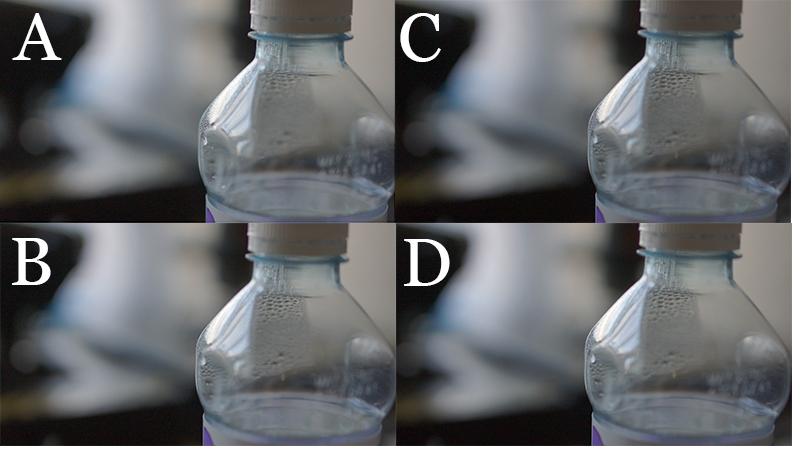
.thumb.jpg.a6298f58c5d12a9edba26d95ca2df7c6.jpg)
.thumb.jpg.fef5a8374eccf2d40224fa0644e194b0.jpg)
.thumb.jpg.2bc1521e5b47674feb84853dd3143385.jpg)
